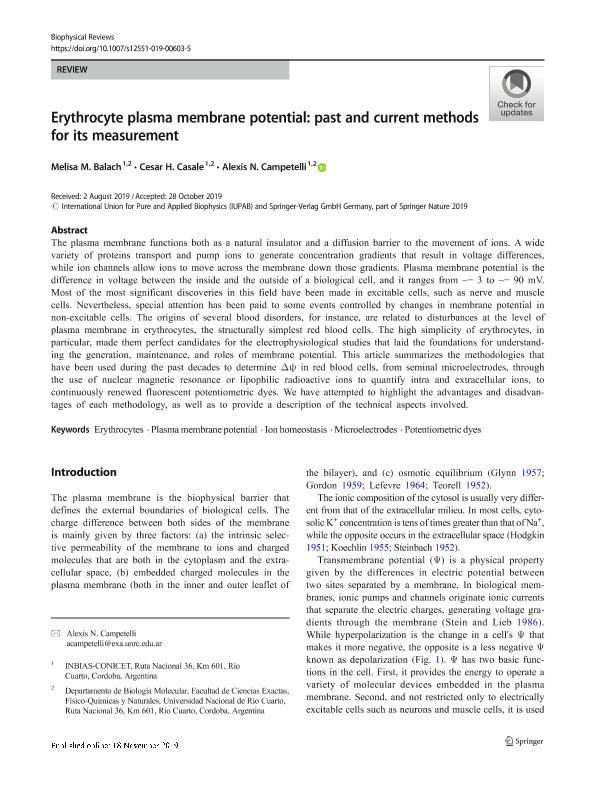Artículo
Erythrocyte plasma membrane potential: Past and current methods for its measurement
Fecha de publicación:
12/2019
Editorial:
Springer
Revista:
Biophysical Reviews
ISSN:
1867-2450
e-ISSN:
1867-2469
Idioma:
Inglés
Tipo de recurso:
Artículo publicado
Clasificación temática:
Resumen
The plasma membrane functions both as a natural insulator and a diffusion barrier to the movement of ions. A wide variety of proteins transport and pump ions to generate concentration gradients that result in voltage differences, while ion channels allow ions to move across the membrane down those gradients. Plasma membrane potential is the difference in voltage between the inside and the outside of a biological cell, and it ranges from ~− 3 to ~− 90 mV. Most of the most significant discoveries in this field have been made in excitable cells, such as nerve and muscle cells. Nevertheless, special attention has been paid to some events controlled by changes in membrane potential in non-excitable cells. The origins of several blood disorders, for instance, are related to disturbances at the level of plasma membrane in erythrocytes, the structurally simplest red blood cells. The high simplicity of erythrocytes, in particular, made them perfect candidates for the electrophysiological studies that laid the foundations for understanding the generation, maintenance, and roles of membrane potential. This article summarizes the methodologies that have been used during the past decades to determine Δψ in red blood cells, from seminal microelectrodes, through the use of nuclear magnetic resonance or lipophilic radioactive ions to quantify intra and extracellular ions, to continuously renewed fluorescent potentiometric dyes. We have attempted to highlight the advantages and disadvantages of each methodology, as well as to provide a description of the technical aspects involved.
Archivos asociados
Licencia
Identificadores
Colecciones
Articulos (INBIAS)
Articulos de INSTITUTO DE BIOTECNOLOGIA AMBIENTAL Y SALUD
Articulos de INSTITUTO DE BIOTECNOLOGIA AMBIENTAL Y SALUD
Citación
Balach, Melisa Micaela; Casale, Cesar Horacio; Campetelli, Alexis Nazareno; Erythrocyte plasma membrane potential: Past and current methods for its measurement; Springer; Biophysical Reviews; 11; 6; 12-2019; 995-1005
Compartir
Altmétricas




